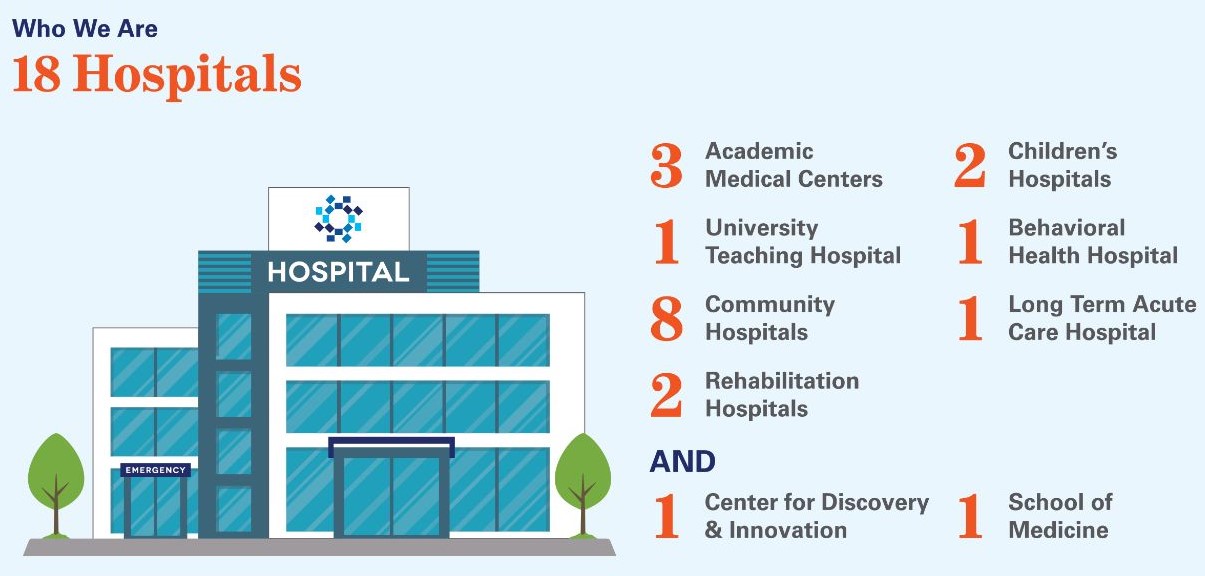About Hackensack Meridian Health
We are a leading not-for-profit health care organization that is the largest, most comprehensive and truly integrated health care network in New Jersey, offering a complete range of medical services, innovative research and life-enhancing care.

In addition to our 18 hospitals, we are home to more than 36,000 team members, 7,000 physicians and 500+ patient care locations, including ambulatory care centers, surgery centers, home health services, long-term care and assisted living communities, ambulance services, lifesaving air medical transportation, urgent care centers, physician practice locations, and a fitness and wellness center.
Transforming Care
Our Hackensack Meridian Center for Discovery and Innovation is dedicated to developing and translating innovations in biomedical sciences to improve outcomes for cancer patients and others with life threatening, disabling and chronic diseases.
Our vision at the Center for Discovery and Innovation is to transform today’s ideas into tomorrow’s new health care delivery.
Defining Academic Excellence
At the Hackensack Meridian School of Medicine, our mission is to develop our students, residents, fellows, faculty, and health care environment to deliver the highest quality care for all.
Our approach is unique as we utilize the best components of different evidence-based teaching methods, and structure our foundational curriculum explicitly to give students what they need to thrive in the modern, technically demanding, clinical setting.
Ranked #1 In New Jersey

We are proud to have two hospitals ranked on New Jersey’s Top 10 Best Hospitals list according to U.S. News & World Report, including Hackensack University Medical Center, the #1 adult and children’s hospital in the state, and Jersey Shore University Medical Center at #6.
JFK Johnson Rehabilitation Institute has also once again been ranked among the nation’s best rehabilitation hospitals.
No matter what, or when, we are ready to care for you.
Environmental, Social and Governance (ESG)
To demonstrate our commitment to creating a more equitable and sustainable future, ESG practices are part of our strategic priorities across the network. Read our 2023 Environmental, Social and Governance report to learn more about how this critical work is building stronger, healthier and thriving communities across New Jersey and beyond.
Explore Hackensack Meridian Health
- Annual Reports
- Awards
- Board of Trustees
- Community Outreach
- Financial Statements
- Patients and Visitors
- Community Health Needs Assessment (CHNA)
- Hackensack Meridian Health Partners CIN
- Leadership
- Mission, Vision, Beliefs
- Mobile Applications
- Nondiscrimination Policy
- Nursing
- Social Media
- Support Groups
- Corporate Compliance Information
- Sustainability at Hackensack Meridian Health